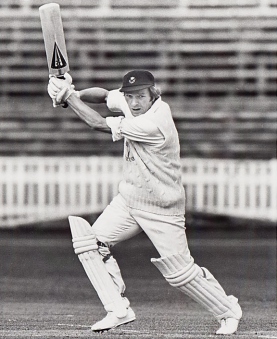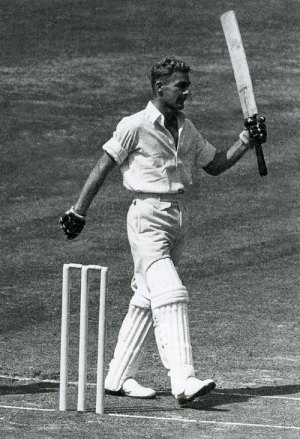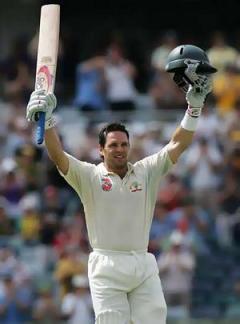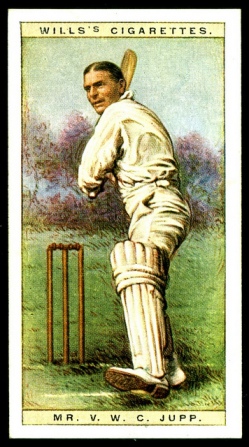Monthly Archives: September 2013
Cricket’s Almost Men- The Unlucky XI
Posted by Mad Crazy Hatter
Cricket is full of tales of ‘almost men’- players who missed out on making it big, mostly through no fault of their own. There is no abundance of talent in the cricketing world, but in the end, only 11 players make a team, which leaves room for several talented individuals to grind it out in the first-class circuit, hoping for their shot at glory. On many occasions, these cricketers are just as talented as international cricketers. Long after they finish their careers, experts and cricket enthusiasts continue to argue what sort of numbers they would have achieved had they got a regular run in international cricket.
The examples of such phenomenon are abundant in world cricket. Cec Pepper was an Australian all-rounder who began his career after the Second World War. Playing for the Australian Services team on their tour of England and the subcontinent, Pepper amassed close to a thousand runs and grabbed 71 wickets in just 18 games. His contemporaries labelled him as the next great all-rounder in Australian cricket. However, a devil-may-care attitude and an argument with Don Bradman meant that Pepper never played for Australia. Similarly, Haryana’s left-arm spinner Rajinder Goel was unlucky to be born in an era where India already had their famed spin quartet of Bedi, Chandrasekhar, Prasanna and Venkataraghavan. Goel never played Test cricket even though he took a record 644 wickets in Ranji Trophy at an average of just 18.
Here, I have attempted to make a team out of the numerous ‘almost men’ in cricket history. First of all, I would like to clarify that the players here are not who succeeded at first-class level but failed internationally (like Messrs Ramprakash and Hick) but rather those who either did not play any Test cricket, or had extremely limited careers where they never got the chance to shine properly. It is my opinion that had any of these 11 men been allowed to play Test cricket regularly, they would have ended up as all-time greats. Secondly, this is an XI for Test cricket alone, and not limited overs. This is because that gives us a level playing field to judge players from before the 1960s, who never played any limited over cricket.
The eligibility criteria for the players is simple-
- The player must have an impressive first-class record, and must have played first-class cricket for a considerable amount of time.
- There is no minimum threshold of first-class games since many countries did not have structured tournaments before the 1970s and as a result, even good players played few games every season.
- The player must have played no more than 10 Tests and performed decently. If a player has failed to perform in Test cricket, he cannot be considered an ‘almost man’.
- The reason for the player being dropped from Tests must not be performance-related i.e. poor form, underwhelming performances, etc.
Before beginning, I would like to mention a few players who were good enough for this team but ironically enough, missed out here as well.
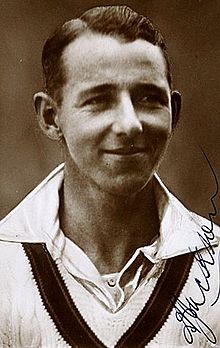
After a phenomenal start to his Test career, Archie Jackson succumbed to tuberculosis at the age of 23.
- Jimmy Cook- South Africa’s no. 1 opener during the 1980s, he played only three Tests due to the ban. Harvested runs for Transvaal and Somerset.
- David Hussey- One of the most underrated batsmen of his generation; dubbed a one-day specialist despite having a more than impressive first-class record.
- Archie Jackson- Many say that had he lived, Jackson would have rivalled Bradman himself. Played only 8 Tests in failing health and yet averaged 47. Died aged 23!
- Mohammad Nissar- Undoubtedly the fastest bowler produced by India. Played only 6 Tests due to the War, and destroyed English and Australian touring sides.
The XI
BARRY RICHARDS (Hampshire, Natal, South Australia) – Opening Batsman
Right Hand Batsman, Right Arm Offbreak (1964-83) – 4 Tests
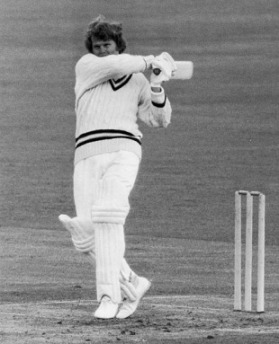
A giant of the game, Richards remains one the most aggressive batsmen the game has seen. Image courtesy thecricketragics.com
|
Mtchs |
Runs |
Avg. |
100/50 |
Hs |
Balls |
Wkts |
Avg. |
10w/5w |
Best |
Ct |
|
339 |
28358 |
54.74 |
80/152 |
356 |
2886 |
77 |
37.48 |
0/1 |
7/63 |
367 |
The fact that Barry Richards is regarded as one of the best opening batsmen in the history of the game even though he played only 4 Tests, speaks volumes about his talent. Richards scored over 500 runs in his debut series. However, it was also his last due to South Africa’s apartheid ban. After that, Richards played around the world, scoring runs in abundance (15600 at 50 for Hampshire, 8300 at 59 for Natal, and 1500 at 109 for South Australia). Richards also played 4 games for World XI in Kerry Packer’s World Series Cricket, scoring two big hundreds. He was one of the openers in the all-time XI selected by Don Bradman.
VIJAY MERCHANT (Bombay, Hindus, Indians) – Opening Batsman
Right Hand Batsman, Right Arm Fast-Medium (1929-51) – 10 Tests
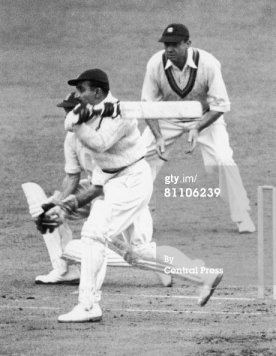
Merchant boasts of the second best career average in first-class cricket, behind Bradman. Image by Central Press © Getty Images
|
Mtchs |
Runs |
Avg. |
100/50 |
Hs |
Balls |
Wkts |
Avg. |
10w/5w |
Best |
Ct |
|
150 |
13470 |
71.64 |
45/52 |
359* |
5087 |
65 |
32.12 |
0/1 |
5/73 |
115 |
To partner Richards, we needed someone who is not just technically correct but can play the quick bowlers well. Merchant remains one of the best players of pace India have produced. On his two tours of England, he scored over 4000 runs with 12 hundreds. Back home, his record was Bradmanesque. He averaged over 100 for both Bombay (in the Ranji Trophy) and the Hindus (in the Pentangular Tournament). Due to the war and injury problems, his Test career was restricted to only 10 Tests, in which he scored three hundreds, including 2 in England. Merchant’s last Test hundred came in his last game, at the age of 40.
STUART LAW (Essex, Lancashire, Queensland) – Top-order Batsman
Right Hand Batsman, Right Arm Medium (1988-2009) – 1 Test

Law scored double hundreds for three different teams in his first-class career. Image courtesy Courier Mail
|
Mtchs |
Runs |
Avg. |
100/50 |
Hs |
Balls |
Wkts |
Avg. |
10w/5w |
Best |
Ct |
|
367 |
27080 |
50.52 |
79/128 |
263 |
8433 |
83 |
51.03 |
0/1 |
5/39 |
407 |
Moving on from the openers, the number 3 spot requires a batsman with good technique and skill, someone who can play in all kinds of conditions. Stuart Law was quite unfortunate not to have played for Australia in this spot due to one Ricky Ponting. He scored an unbeaten half century on his Test debut in 1995, was dropped promptly and never played Tests again. He did, however, score prolifically for Queensland, Essex, and Lancashire, scoring over 7000 runs for each of these teams. Law scored 1000 runs in an English season five times in a row, and continued to churn out runs right until his retirement.
MARTIN DONNELLY (Canterbury, Wellington, Middlesex) – Middle-order Batsman
Left Hand Batsman, Slow Left Arm Orthodox (1936-61) – 7 Tests
|
Mtchs |
Runs |
Avg. |
100/50 |
Hs |
Balls |
Wkts |
Avg. |
10w/5w |
Best |
Ct |
|
131 |
9250 |
47.43 |
23/46 |
208* |
3484 |
43 |
39.13 |
0/0 |
4/32 |
76 |
There might be a couple of batsmen who could have been here instead of Donnelly but he merits a place on account of being the best left-hander among the probables. Even though Donnelly played only 7 Tests for New Zealand (where he averaged 52), he is considered one of their best batsmen ever. He remains the only person to score centuries on Lord’s for four different teams, which included a masterful 133 for Dominions against England in 1945 and a Test double ton in 1949. He averaged 65 for Oxford University, and also scored a double century for MCC. In 2011, Donnelly was selected in ESPN’s New Zealand All-time XI.
BRAD HODGE (Leicestershire, Lancashire, Victoria) – Middle-order Batsman
Right Hand Batsman, Right-Arm Offbreak (1994-2009) – 6 Tests
|
Mtchs |
Runs |
Avg. |
100/50 |
Hs |
Balls |
Wkts |
Avg. |
10w/5w |
Best |
Ct |
|
223 |
17084 |
48.81 |
51/64 |
302* |
5583 |
74 |
41.70 |
0/0 |
4/17 |
127 |
If there has been a more talented and unlucky batsman in world cricket, I would like to hear more about him. Beginning his career for Victoria, Hodge punished Australian bowlers in the Sheffield Shield, before deciding to torture English bowlers in the County Championship for Leicestershire. Years of prolific scoring earned Hodge a Test cap at the age of 30. In only his 3rd Test, he notched up an unbeaten double hundred against a strong South African bowling attack. Sadly, the abundance of quality batsmen in the Australian side kept him out of the ranks, and he ended with a batting average of 55.
MIKE PROCTER (Rhodesia, Gloucestershire, Natal) – All-rounder, Captain
Right Hand Batsman, Right Arm Fast (1965-89) – 7 Tests
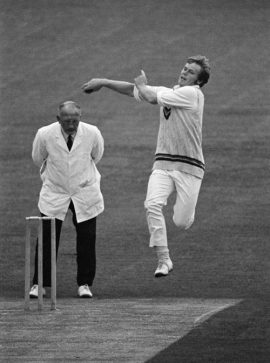
Procter averaged 15 with the ball in Tests, the best for any post-war bowler. Image from The Cricketer International © Ken Kelly
|
Mtchs |
Runs |
Avg. |
100/50 |
Hs |
Balls |
Wkts |
Avg. |
10w/5w |
Best |
Ct |
|
401 |
21936 |
36.01 |
48/109 |
254 |
65404 |
1417 |
19.53 |
15/70 |
9/71 |
325 |
If the apartheid ban hadn’t curtailed his international career, Procter would have joined the likes of Imran, Hadlee, Botham, and Kapil as one of the greatest all-rounders of the 70s and 80s. A genuine wicket taker, he bowled at express pace with a chest-on action, posing an ever-present threat to the batsmen with his pace and swing. As a batsman, he remains one of only three players (apart from Bradman and CB Fry) to score 6 consecutive first-class centuries. His true swansong was the World XI ‘Test’ series against England in 1970, where he averaged 48 with the bat and 23 with the ball. His experience of captaining Gloucestershire for several years makes him an ideal candidate for leading this team.
VALLANCE JUPP (Northamptonshire, Sussex) – All-rounder
Right Hand Batsman, Right Arm Offbreak (1909-38) – 8 Tests
|
Mtchs |
Runs |
Avg. |
100/50 |
Hs |
Balls |
Wkts |
Avg. |
10w/5w |
Best |
Ct |
|
529 |
23296 |
29.41 |
30/120 |
217 |
72574 |
1658 |
23.01 |
18/111 |
10/127 |
222 |
The real competition for this spot was between Jupp and Sussex’s left-arm spinner James Langridge. Both were spin bowling all-rounders who batted in the middle-order. Even though Langridge boasted of a superior batting average (35 to Jupp’s 29), I went for Jupp as his off-break will provide variety to the team’s bowling options. A balanced all-rounder, Jupp achieved the double of 1000 runs and 100 wickets in a year 10 times, and took five hat-tricks in his career. He also scored 30 hundreds, including a double hundred. Despite returning a tremendous bowling average of 22, Jupp only played 8 Tests for England.
RAY JENNINGS (Transvaal) – Wicketkeeper
Right Hand Batsman, Wicketkeeper (1973-93)
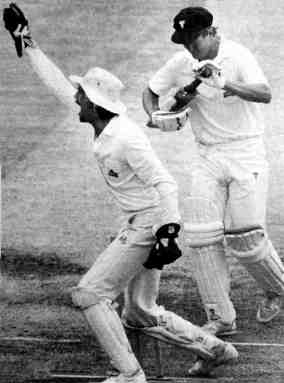
Before becoming a celebrated coach, Jennings was South Africa’s number 1 wicketkeeper for many years. Image from the website ‘St. George’s Park History’
|
Mtchs |
Runs |
Avg. |
100/50 |
Hs |
Ctchs |
St. |
|
159 |
4160 |
23.90 |
3/15 |
168 |
567 |
54 |
Jennings was unfortunate, like many others in this team that his entire career coincided with South Africa’s apartheid ban. As a result, despite being South Africa’s first-choice wicketkeeper for over a decade, he never played international cricket. Jennings played most of his cricket for Transvaal and Northern Transvaal in the Currie Cup. A capable lower-order batsman, Jennings scored 2 hundreds for Transvaal and one for Northern Transvaal. He played 14 ‘Rebel’ Tests for South Africa in the 80s, making 50 dismissals in all. His relative shortcomings with the bat are easy to ignore given his superior keeping skills.
VINCE VAN DER BIJL (Middlesex, Natal, Transvaal) – New-ball Bowler, Lower-order Batsman
Right Hand Batsman, Right Arm Fast-Medium (1967-83)
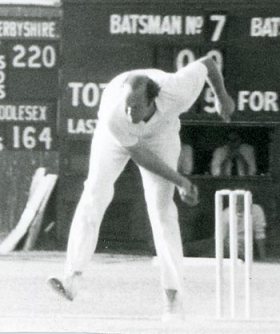
Due to his height and bowling style, van der Bijl was often compared to his contemporary and West Indian great Joel Garner. Image © Martin Williamson
|
Mtchs |
Runs |
Avg. |
100/50 |
Hs |
Balls |
Wkts |
Avg. |
10w/5w |
Best |
Ct |
|
156 |
2269 |
16.20 |
0/9 |
87 |
– |
767 |
16.54 |
12/46 |
8/35 |
51 |
Leading the bowling attack for this team is the ‘best bowler never to play Test cricket’. Just like Procter and Richards, van der Bijl’s international career was hampered by the ban. Freakishly tall, he had the capability to generate enormous pace and bounce on any pitch. His international career was limited to 6 Rebel ‘Tests’ where he took 29 wickets, averaging under 20. He took over 500 wickets for Natal at an average of 16, and during his brief stint at Middlesex, he averaged just 15. On helpful batting pitches, he could be a handy batsman too. He scored 7 fifties for Natal and averaged 25 with the bat in England.
CHARLIE PARKER (Gloucestershire) – Spinner
Right Hand Batsman, Slow Left Arm Orthodox (1903-35) – 1 Test
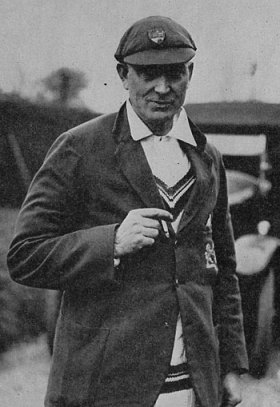
Parker holds the record for most first-class wickets without a Test five-wicket haul. Image from The Cricket International
|
Mtchs |
Runs |
Avg. |
100/50 |
Hs |
Balls |
Wkts |
Avg. |
10w/5w |
Best |
Ct |
|
635 |
7951 |
10.47 |
0/10 |
82 |
157059 |
3278 |
19.46 |
91/277 |
10/79 |
247 |
One of the finest and most successful slow bowlers in the game’s history has the honour of being this team’s lead spinner. With over 3000 wickets, Charlie Parker is 3rd in the list of most wickets in cricket history, behind only Rhodes and Freeman. He took 100 wickets in a season for 16 consecutive years from 1920-35, taking over 200 wickets on five occasions. He took all ten wickets once and nine wickets in an innings no less than eight times. On rain affected pitches, he was virtually unplayable due to his remarkable accuracy and control. In his only Test, he took 2 wickets and bowled 16 maidens in 28 overs- at the age of 39.
LES JACKSON (Derbyshire) – New-ball bowler
Right Hand Batsman, Right Arm Fast (1947-63) – 2 Tests
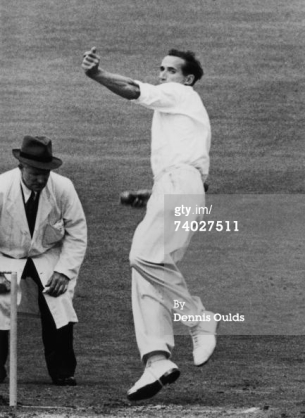
Playing for an ‘unfashionable’ county also contributed to Jackson being ignored by England selectors. Image by Dennis Oulds © Getty Images
|
Mtchs |
Runs |
Avg. |
100/50 |
Hs |
Balls |
Wkts |
Avg. |
10w/5w |
Best |
Ct |
|
418 |
2083 |
06.19 |
0/0 |
39* |
83267 |
1733 |
17.36 |
20/115 |
9/17 |
137 |
Les Jackson’s career was a series of unfortunate events. He didn’t make his first-class debut till the age of 26 due to the Second World War. Since England already had a formidable new-ball pairing in Bedser and Statham, he found it hard to break through. Jackson was almost a certainty for the 1950-51 Ashes tour but was left out at the last minute. He only played two Tests, 12 years apart. But even then, he impressed with match figures of 3/72 in 1949 and 4/83 in 1961. A fit bowler with pace and stamina, he remained a loyal servant for his county Derbyshire for 16 seasons, taking 100 wickets in a season on 10 occasions.
12th Man
FRANKLYN STEPHENSON (Barbados, Orange Free State, Nottinghamshire, Sussex) – All-rounder
Right Hand Batsman, Right Arm Fast (1981-97)
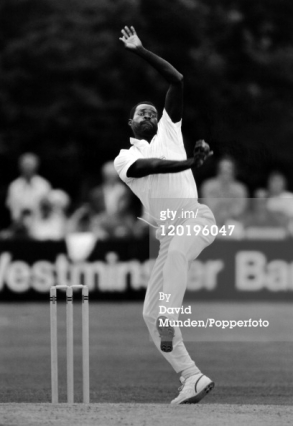
During his peak years, Stephensons was said to be just as good as the legendary fast bowlers playing for West Indies. Image by David Munden © Getty Images
|
Mtchs |
Runs |
Avg. |
100/50 |
Hs |
Balls |
Wkts |
Avg. |
10w/5w |
Best |
Ct |
|
219 |
8622 |
27.99 |
12/43 |
166 |
40303 |
792 |
24.26 |
10/44 |
8/47 |
100 |
A brute of a fast bowler and a wonderful lower order batsman, Stephenson has been labelled the greatest cricketer never to play for West Indies. He played first-class cricket for seven teams over four continents but due to his involvement in the rebel tour to South Africa in 1982, he was never selected for his national side. He did play for a World XI in 1985 apart from 3 Rebel Tests against South Africa. In 1988, he became the last player to achieve the English double of 1000 runs and 100 wickets in a season. In the process, he also became the first man in 90 years to score two hundreds and take 10 wickets in the same match.
This team can give any Test side in the world a run for their money. It not only possesses a good balance between bat and ball but consists of players who were as good as most Test greats, if not better. The batting line-up is formidable, to say the least. The two openers – Richards and Merchant – both have multiple Test centuries despite playing only 14 Tests combined. They are both considered one of the best opening batsmen from their respective countries. Our no. 3, Stuart Law, scored an unbeaten half-century in his only Test innings apart from scoring heavily for three different first-class outfits in two countries. The next two in line – Hodge and Donnelly – both have a Test double century each, as well as several other hundreds against Test-level opponents.
Our top-order is ably supported by two quality all-rounders. Mike Procter is a genuine middle-order batsman. He scored some of the fastest centuries in first-class cricket during the 80s. Plus, it’s no mean feat equalling a record originally set by Bradman (six consecutive centuries). At no. 6, he is a valuable counter-puncher for the team. At no. 7, we can have either Valance Jupp, or (in pace-friendly pitches) Franklyn Stephenson. Jupp scored over 20,000 runs and had a double century of his own. Stephenson was no mug with the bat either. He once scored a century in both innings of a game, and had 10 other centuries to boast about. The wicketkeeper Ray Jennings can also be expected to make useful contributions from the lower-order, and bat around the tail if required. In short, this is a batting line-up that you can expect to score 500 plus when they are on song; and the good thing about these gents is that they are almost always on song.
My new-ball bowlers for this team are Procter and van der Bijl, two contrasting and yet effective bowlers. Procter is sheer pace and accuracy, while van der Bijl brings with him bounce through his 6-feet, 7-inch frame. Imagine them as a 1980s version of Steyn and Morkel, if you will. Our third seamer Les Jackson is just as effective and lethal as these two. Occasionally, when the conditions favour his seam movement, he can be expected to take the new ball as well. In these three, we have three fast bowlers with different styles and different approaches to dismissing the batsmen- a complete pace bowling attack. The lead spinner Charlie Parker is a legend of the game, to say the least. Many have called him the greatest spinner to never have achieved international fame. For a man who has taken over 3000 wickets, he played very few Tests. His mastery of line, length, and spin will surely pose many questions to the batsmen.
The choice of fifth bowler depends on the match conditions. Ordinarily, I would like to go with three fast bowlers and two spinners, with Vallance Jupp as my fifth bowler. As an off-spinner, his style of bowling is quite different to the southpaw Parker. Bowling in tandem, they can form a very formidable spin bowling partnership. Moreover, Jupp is not just a support bowler. He did take all ten wickets in an innings once and nabbed no fewer than five hat-tricks. On dusty subcontinental pitches, Messrs Jupp and Parker can do the kind of damage that Bedi and Chandra did to touring sides in the 70s. However, on pitches like Perth and Durban, it would be nice (read: bitchin’) to have some extra firepower in the form of four fast bowlers. Jupp can be replaced by Stephenson, a thoroughbred Caribbean fast bowler. Stephenson played his cricket in four different countries- England, Barbados, Australia, and South Africa. This experience of playing in different conditions can come handy for this team. Asolid fast bowler, Stephenson is more than capable of cleaning out sides by himself. Imagine the damage he can do with the help of Procter & Co.
With that, I gift my side to the world. Let the arguments, criticisms, and angry rants begin!
